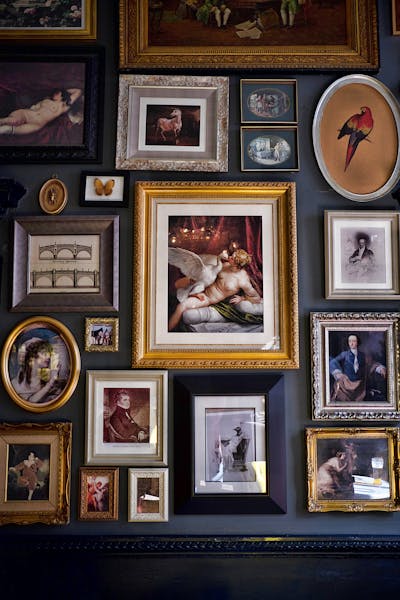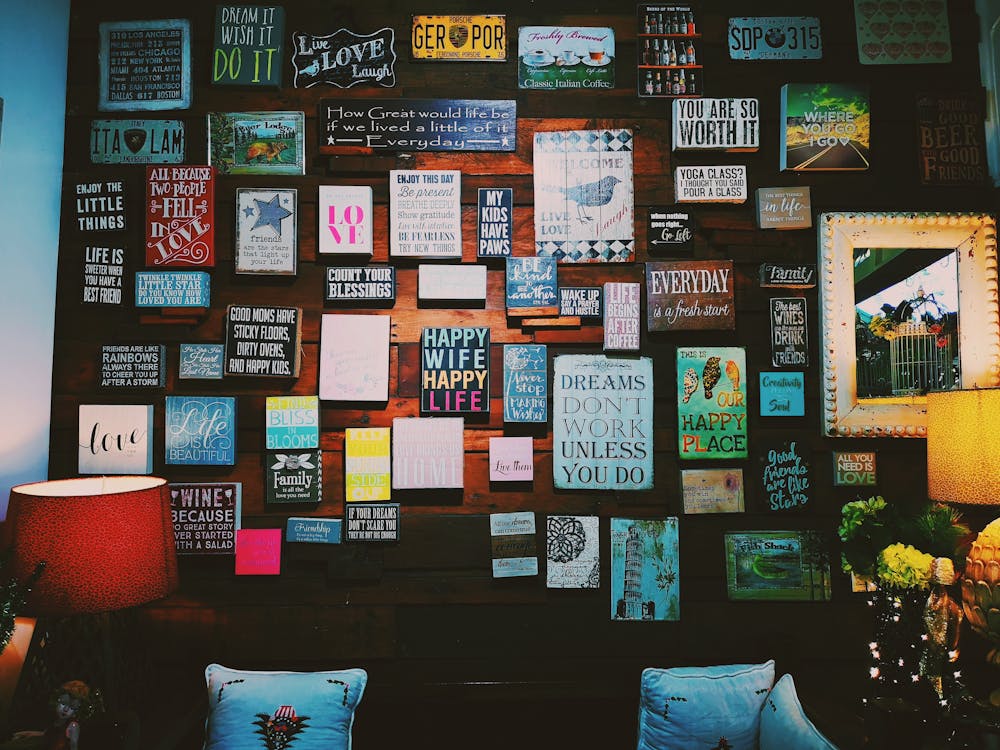In the ever-evolving landscape of interior design, a notable shift is taking place that transcends mere aesthetics and delves into the realm of storytelling. More than ever before, designers are recognizing the power of narrative-driven interiors, where each element is carefully curated to communicate a compelling story. This trend isn’t just about creating visually appealing spaces; it’s about crafting environments that resonate with meaning and purpose.
Residential Havens: Crafting Personal Narratives
Imagine a wall art installation in the home of a well-travelled homeowner, eager to cherish their adventures. The designer, inspired by the homeowner’s wanderlust, engages in deep conversations to understand their experiences and aspirations. Utilizing advanced technology, such as 3D presentations and AI conceptualization, the designer creates an abstract world map, adorning one of the walls. Each country visited by the homeowner is represented by a unique color or texture, creating a visually striking and deeply personal piece of art that celebrates their globe-trotting experiences.

Commercial Enterprises: Aligning with Brand Identity
Consider a boutique hotel that seeks to immerse guests in a narrative of luxury and elegance. In the lobby, a stunning wall mural depicts a series of abstract landscapes, each inspired by a different destination around the world. Through consultations and in-depth conversations with the hotel management, the designer ensures that the mural aligns seamlessly with the brand’s image and values. Utilizing cutting-edge technology, such as AI for conceptualization, the designer brings the vision to life, creating an immersive environment that transports guests to far-off lands.
Use of Symbolism and Metaphor: Adding Depth to Design
One of the key elements of narrative-driven design is the use of symbolism and metaphor. Just as a skilled author employs literary devices to convey deeper meanings, designers use visual cues to tell a story. Whether it’s a sculptural centrepiece that serves as a metaphor for growth and transformation or a mural that celebrates the local community, these elements add layers of depth and nuance to the space, inviting interpretation and engagement.
Utilizing Advanced Technologies: Bringing Concepts to Life
The process of achieving these desired design elements involves a multifaceted approach. It begins with thorough consultation and deep conversations with clients to understand their vision, preferences, and personal narratives. Designers utilize advanced technologies, such as 3D presentations and AI conceptualization, to bring concepts to life and ensure alignment with the client’s vision.

Collaborative Execution: Precision and Attention to Detail
Furthermore, designers collaborate closely with architects, contractors, and artisans to execute the design vision with precision and attention to detail. Every element, from furniture and fixtures to artwork and accessories, is carefully curated to enhance the narrative and create a cohesive and immersive environment.
Fostering Connection and Belonging: Creating Meaningful Spaces
But perhaps the most compelling aspect of narrative-driven design is its ability to foster connection and belonging. In a world that often feels fragmented and disconnected, these spaces offer a sense of unity and shared experience. Whether it’s a shared workspace where colleagues collaborate seamlessly or a retail environment that fosters a sense of community, narrative-driven interiors have the power to bring people together and create meaningful connections.
As we look to the future of interior design, it’s clear that narrative-driven interiors will continue to play a prominent role. By harnessing the power of storytelling and utilizing advanced technologies and design processes, designers can create spaces that not only inspire and delight but also resonate on a deeply human level. Whether it’s through residential havens that celebrate the art of living or commercial environments that elevate the brand experience, narrative-driven design offers endless possibilities for creativity, innovation, and connection.


